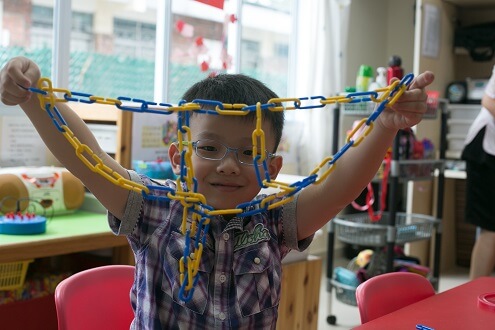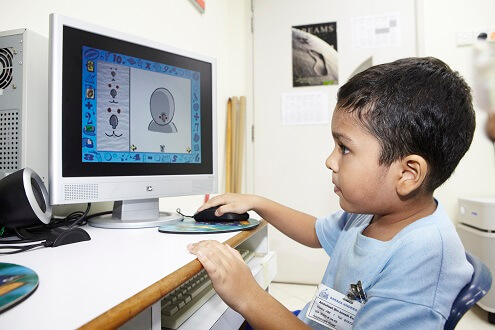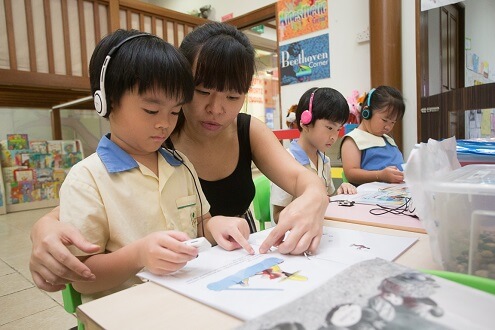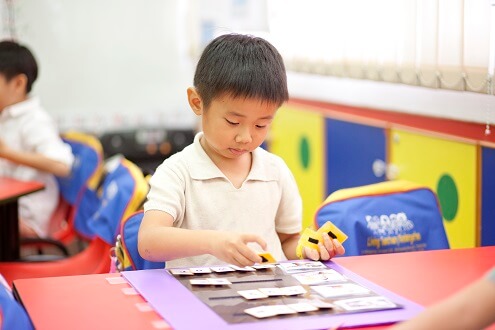In Clear Sight


Reading in poorly-lit rooms. Indulging in too much television-watching. Being glued to handheld electronic devices. Such common behaviours in young children can all contribute to eye problems. However, a child might not be able to tell an adult of his difficulty in seeing clearly — which could in turn affect his learning and pose further strain to his eyes. Thus it is important for parents to monitor for signs of eye problems their child might be encountering.
According to Dr Veronica Tay, the Deputy Director of Student Health Centre and National Myopia Prevention Programme at the Health Promotion Board (HPB), ‘refractive errors’ in a child’s eye may develop between birth and when he or she is between six to nine years old. The most common pre-school vision problems are refractive errors which range from far-sightedness hyperopia), to near-sightedness (myopia) and astigmatism.
DIFFERENT KINDS OF VISION PROBLEMS
Myopia is also known as short-sightedness and is a condition where objects at a distance are not clearly seen. It is usually caused by an elongation of the eyeball that occurs over time Because of this, light rays coming into the eye are not properly focused onto the retina.
Long-sightedness or far-sightedness (hyperopia) refers to the difficulty of seeing near objects clearly. Caused by a shorter eyeball or an abnormal shape of the cornea, it is common in young children and may lead to strabismus (squinting). Dr Tay says that uncorrected strabismus may lead to amblyopia — usually referred to as ‘lazy eye’. Amblyopia is when the brain does not fully recognise images seen by the amblyopic eye, thus reducing the ability to see in that eye.
Astigmatism is due to an irregularly shaped cornea where part of it does not allow light to focus onto the retina. The result is a blurred area within an otherwise clear image. This problem may occur along with either myopia or hyperopia.
SYMPTOMS TO LOOK OUT FOR
Here is a checklist for parents and guardians to watch out for. They should be on the alert if a young child:
- Complains that distant objects appear blurred
- Consistently sits too close to the TV or holds a book too close when reading
- Squints or tilts the head in order to see better
- Rubs his eyes frequently
- Shows sensitivity to light and/or his eyes tears excessively
- Closes one eye or frowns when reading or watching TV
- Avoids activities which require near vision such as reading or homework, or which require distance vision such as participating in sports or other recreational activities
- Complains of headaches or tired eyes
- Makes mistakes frequently when copying from the board
Studies have shown that children who spend more time on outdoor activities have less risk of developing myopia. However Dr Tay highlights that there are no proven preventive measures.
“Though we cannot prevent the development of these refractive errors, early detection and management is vital in correcting vision for better learning,” she says.

TWO-PRONGED APPROACH
The National Myopia Prevention Programme (NMPP), which started in 2001aims to delay the onset and progression of myopia. This is done through a two-pronged approach. The first part raises awareness for early detection and management of defective vision through public education, and promoting outdoor activities and other good eye care habits in children. The second part involves regular vision screening focusing on early detection, management and monitoring of myopia prevalence rate among children.

“Vision screening can also indicate if a child has long-sightedness or astigmatism as these also manifest as blurred vision,” says Dr Tay.
To this end, vision screening is conducted for Kindergarten 1 and 2 students, primary school students as well as Secondary 1, 2 and 4 students as part of the annual health screening.
On diagnosis, younger children (K1, K2 and P1 students) found to have poor visual acuity (of Snellen 6/12 or worse) are referred to the Refraction Clinic at the Student Health Centre, HPB. Prescriptions are then given for spectacles to be made at optical shops. Children who require further assessment are referred to the Paediatric Ophthalmologists at the public hospitals.
BETTER EYE CARE
How can you promote better eye care in your child? Here are some tips from Dr Tay.
- Increase the time your child spends on outdoor play

- Reduce the time your child spends on unnecessary near work such as playing games on hand-phones and hand-held devices.
- Ensure that your child takes a break after 30-40 minutes of near work such as reading, writing or working on a computer.
- Ensure that your child keeps a distance of about 50 cm from the computer screen.

- Ensure that your child sit at least 2m away from the television.
- Check that the book your child is reading at arm’s length or 30cm away.

- Check that the room your child is reading in is well-lit.
- Teach your child to sit in a correct, upright posture.

You may also like

From Cabin to Classroom: Journey of an Outstanding Early Childhood Educator
The PDP modules allowed me to get creative with lesson ideas and keep up with the ever-changing Early Childhood sector.

Ms Farhana Binte Mohamed Hassan
Early Years Educator - PCF Sparkletots @ Pioneer Block 987D (CC)

More Than Just a Place for Food
Young children are highly inquisitive, and learn most effectively with activities that allow exploration and experimentation.

Kinderland @ Yio Chu Kang

Little Fingers Create Great Art - A Community Project by Kinderland and Skool4kidz
I believe this collaborative effort is a very meaningful contribution to the SG50 celebrations.

Kinderland and Skool4Kidz